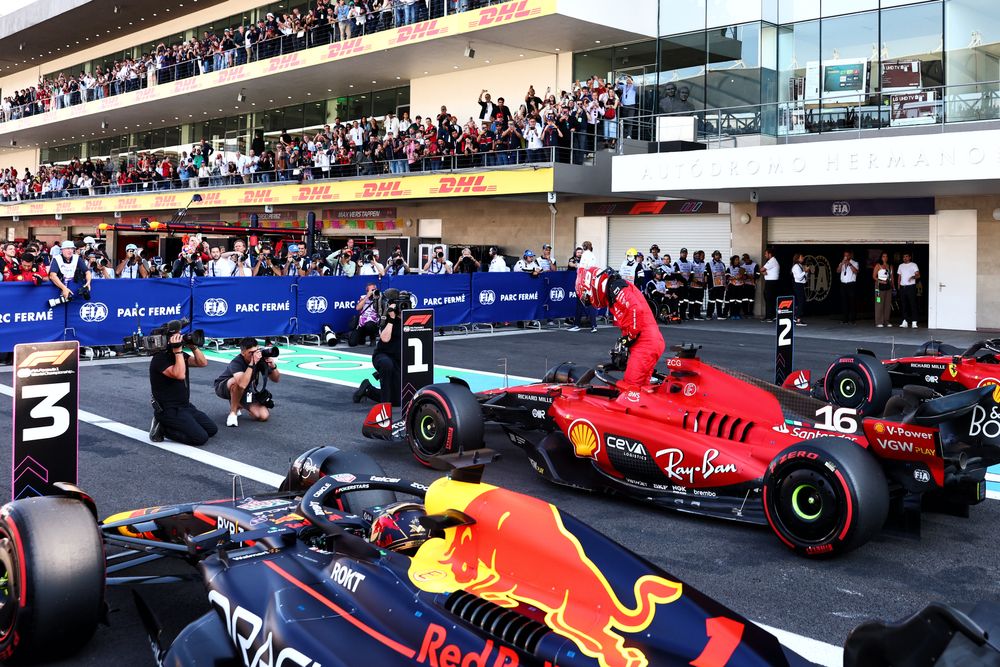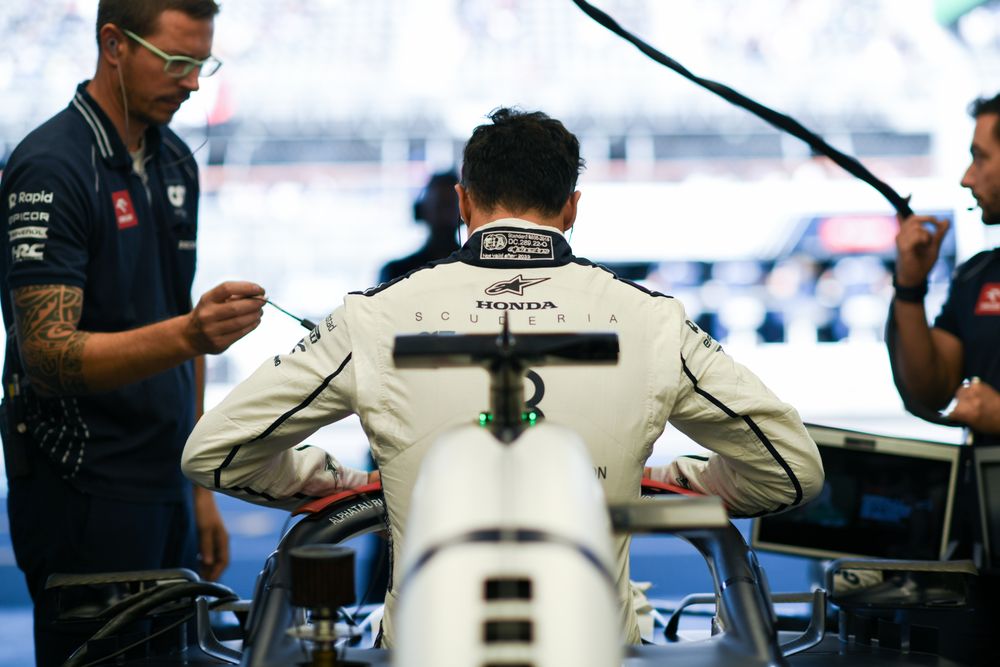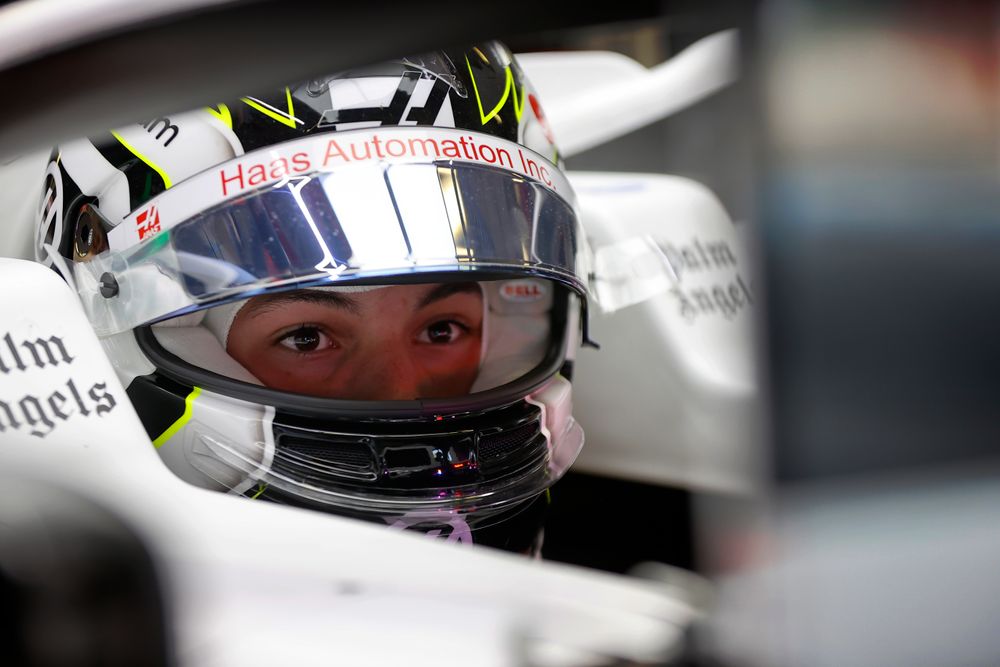Up Next

We cautioned at the end of our analysis of Mexican Grand Prix Friday practice that things tend to be volatile around here and boy did things go random in qualifying.
In the first runs of Q3 Ferrari found the two-minute window in which conditions suited its car perfectly and suddenly gave it the balance it hitherto lacked – and it was suddenly almost 1s quicker than it had been all weekend. Enough for both Charles Leclerc and Carlos Sainz to shade Max Verstappen’s Red Bull.
Similarly, Alex Albon’s Williams, having been super-quick pretty much every time it ran (aside from his floor-damaged FP2 lap) was suddenly 1s off the pace.
Easy to be cynical and say it was running light during practice, but that absolutely does not stack up.
The parts of the track where it would have shown an advantage had it been light were not where it had been so fast. Until qualifying began, it looked genuinely the second-quickest car after the Red Bull. Something that was backed up by the long runs, in which Albon was super-quick, only around 0.2s off Sergio Perez on the same tyre.
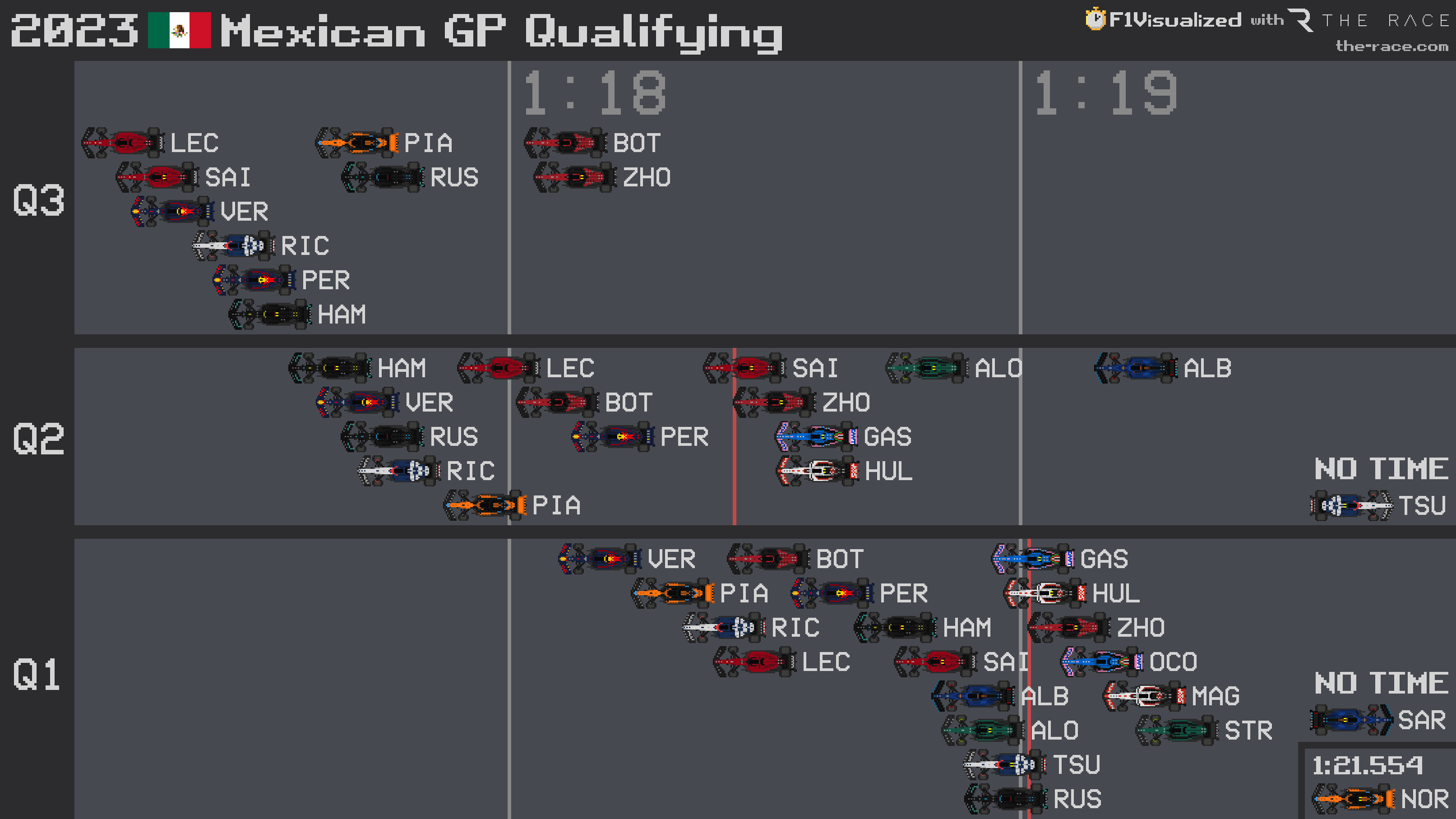
No, all the evidence points to Albon and Williams having been caught out by the exact same mechanism which so worked in Ferrari’s favour. Just with a car trait which reacted in the opposite – but pretty much equal - way.
Then there’s Daniel Ricciardo’s AlphaTauri, fourth-fastest, 0.2s off pole and ahead of Perez’s Red Bull. He’d shown glimpses of such form in practice, but this was beyond that.
Mexico City always mixes up the variables, but this was the most extreme we’ve seen so far. Just what happened out there?
THE SCIENCE BEHIND THE SWINGS
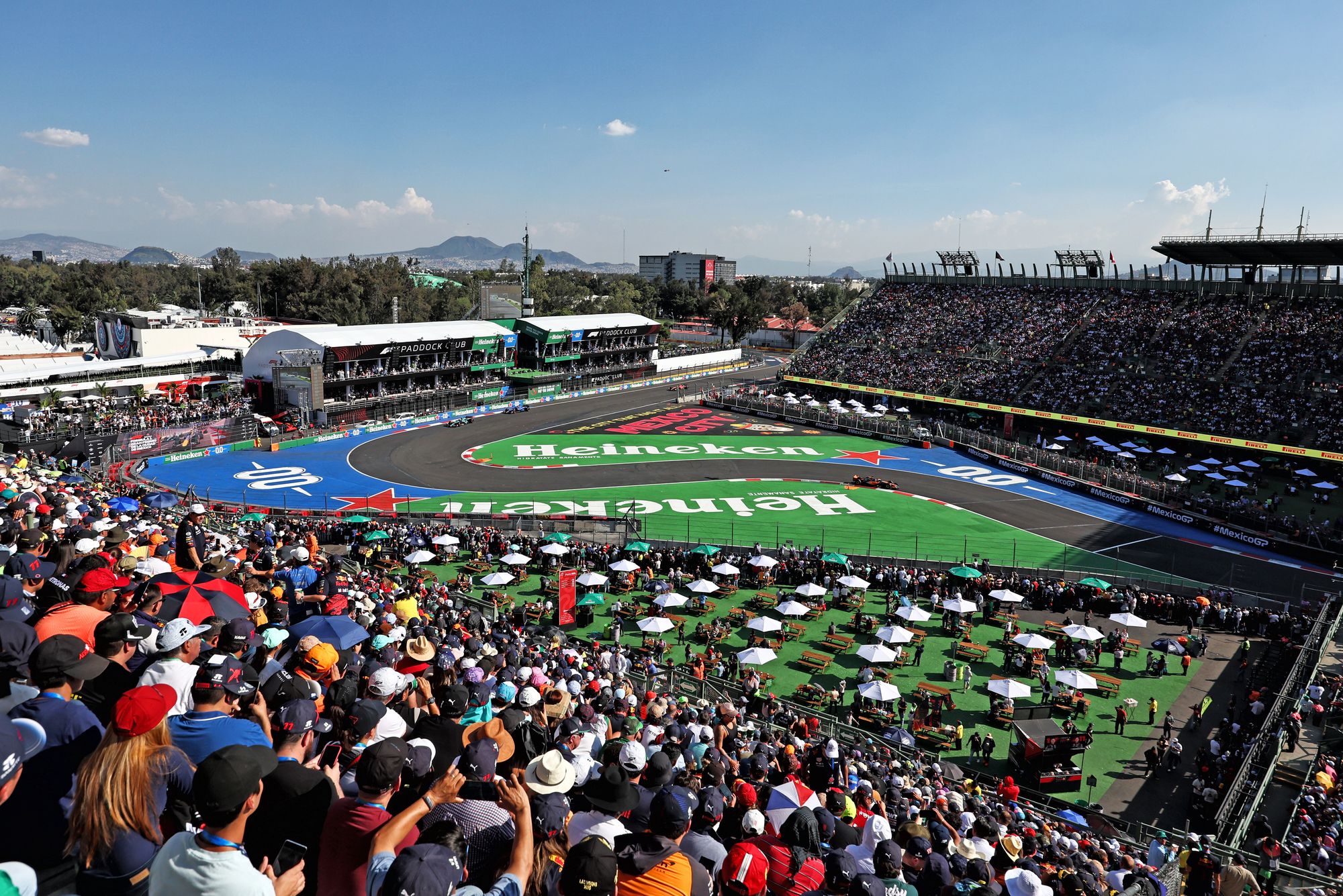
The volatility is always rooted in the circuit’s super-high altitude and its 25% thinner air. This has a big impact on a tyre which is highly sensitive to track temperature, particularly in its softest C5 compound.
First of all, the thinner atmosphere means 25% less downforce is pressing the tyres into the track. That low downforce (even from the maximum size wings everyone runs) means it’s very difficult to get adequate temperature into the front tyres on the preparation lap. Especially when the rears are prone to overheating and so the preparation lap must be driven slowly.
The secondary factor is that just a small change in ambient temperature changes the track temperature disproportionately. This too is to do with the high altitude. Because the air has fewer molecules in it, there is less blockage of the sunlight and the effect on the temperature of the ground is more direct.
For example, the ambient temperature fell by two degrees between the start of qualifying and the end, but the track temperature had reduced by nine degrees in that time. This is a far more dramatic effect than we see at lower altitudes.
Now amid that greater temperature variation, factor in that this tyre is extra sensitive to track temperature. So there is a compounding effect. The effect of this plays out in at least two critical ways:
At a certain threshold of track temperature – around 40 degrees – it changes the limitation between the front and rear axle. At lower track temperatures the front tyres are the limitation. Beyond that, the rear tyres become the limitation.
Different cars inherently have different inherent front or rear limitations so can be advantaged or disadvantaged quite differently by variations in temperature. An inherently front-limited car will enjoy high track temperatures which make the tyre limitation the rear. A car which is naturally more rear-limited will prefer a lower track temperature which shifts the limitation to the front.
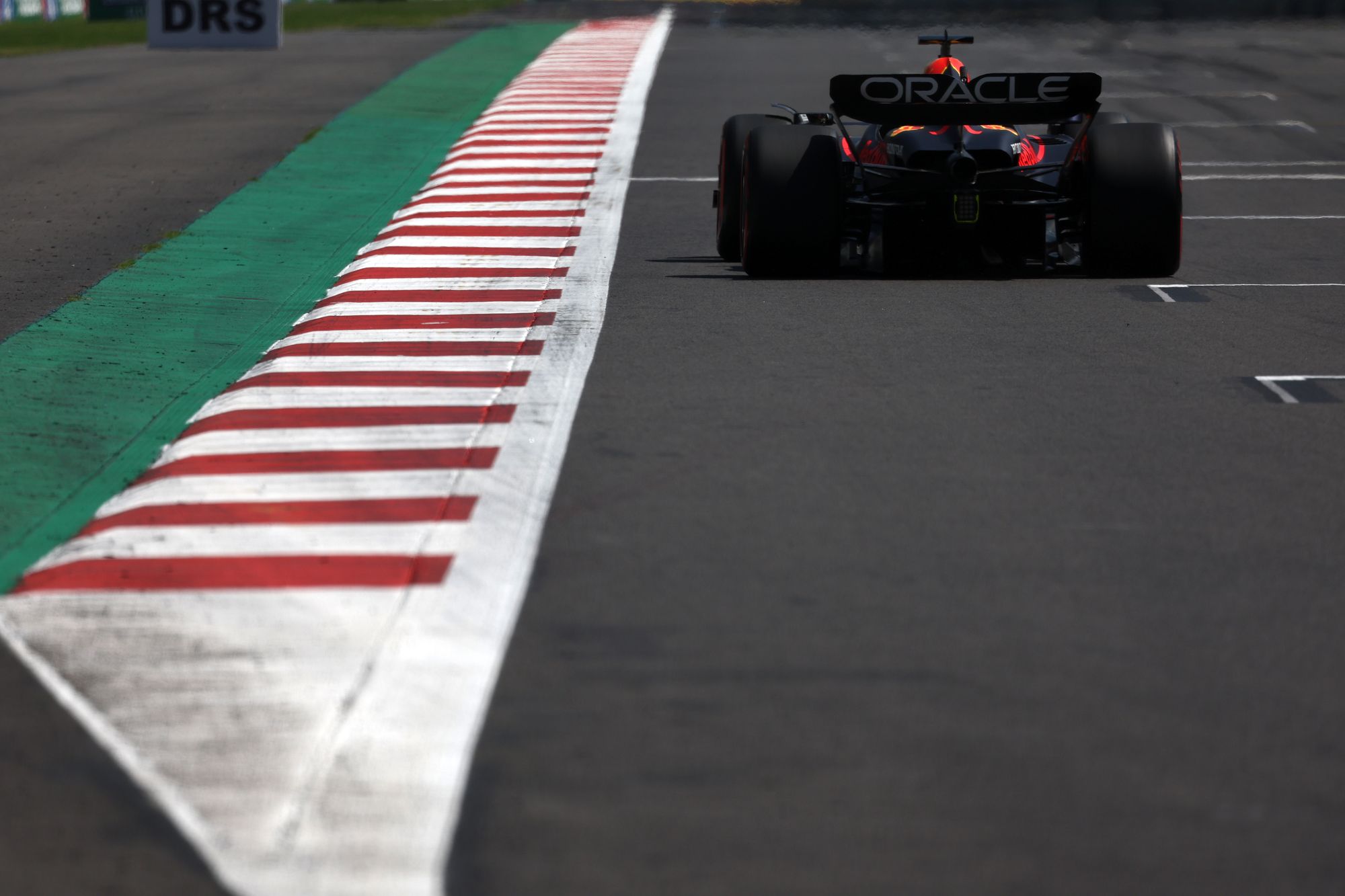
The other way that compounding tyre volatility plays out is that it makes balancing the temperatures of front and rear tyres on the preparation lap even more demanding.
Pirelli’s chief engineer Simone Berra explains: “What the teams are doing is trying to generate as much as possible temperature in the front axle with the brakes.
"That’s the only real tool they have. Weaving doesn’t provide enough temperature to the core of the tyre, only the tread.
"The circuit layout is demanding too because you have this really long straight [where the tyres cool] and going into Turn 1 if the front axle isn’t ready, you lose a lot. While in sector two and three, there is a lot of high-speed cornering followed by heavy traction demands.
“On the prep there are different approaches. What Ferrari could have found is a good compromise between front axle readiness and rear axle temperature control. The issue is always to balance the temperatures of the two axles, to keep the rear temperatures down and the fronts up.
"The C5 makes it even harder. The tyre is quite peaky, with a very narrow working temperature range, you lose a lot of performance other side of a very pointy peak. Also here the track starts with very low grip but it builds.
"So everything is always changing and everything is responding a lot to the change. It all makes it more difficult to balance the axles.”
The track temperature at the start of Q1 was higher than it had been all weekend, at 46-degrees C. As it fell to 42-deg C by the beginning of Q3, the Ferrari suddenly seemed to find its sweet spot. Leclerc found 0.8s compared to his best Q2 lap. Verstappen (who had been quickest in Q1 and Q2, 0.3s and 0.4s respectively faster than the Ferrari) found just 0.4s.
“I didn’t improve enough,” said Verstappen afterwards. “It’s so low grip, you push a bit more and you heat tyres, you have little slides, the balance is not quite there and suddenly you get to the last sector and you have no tyres left.
"I was sliding around quite a bit because the first sector wasn’t good enough.”
Right there, is the playing out of the difficulty Berra outlined. The Ferrari picked up a much-improved balance from the temperature drop. The Red Bull less so.
IT WASN'T JUST LUCK FOR FERRARI
You might put the way the track temperature fell at just the right rate for Ferrari down to luck. But Ferrari, knowing that this volatility was a potential opportunity, had practiced out-lap preparation a lot in that morning’s FP3.
So there was merit there too. While others were putting consecutive laps together or doing qualifying simulations, Carlos Sainz did five consecutive in-out laps on the C5 tyre. Even Leclerc did three such prep lap rehearsals.
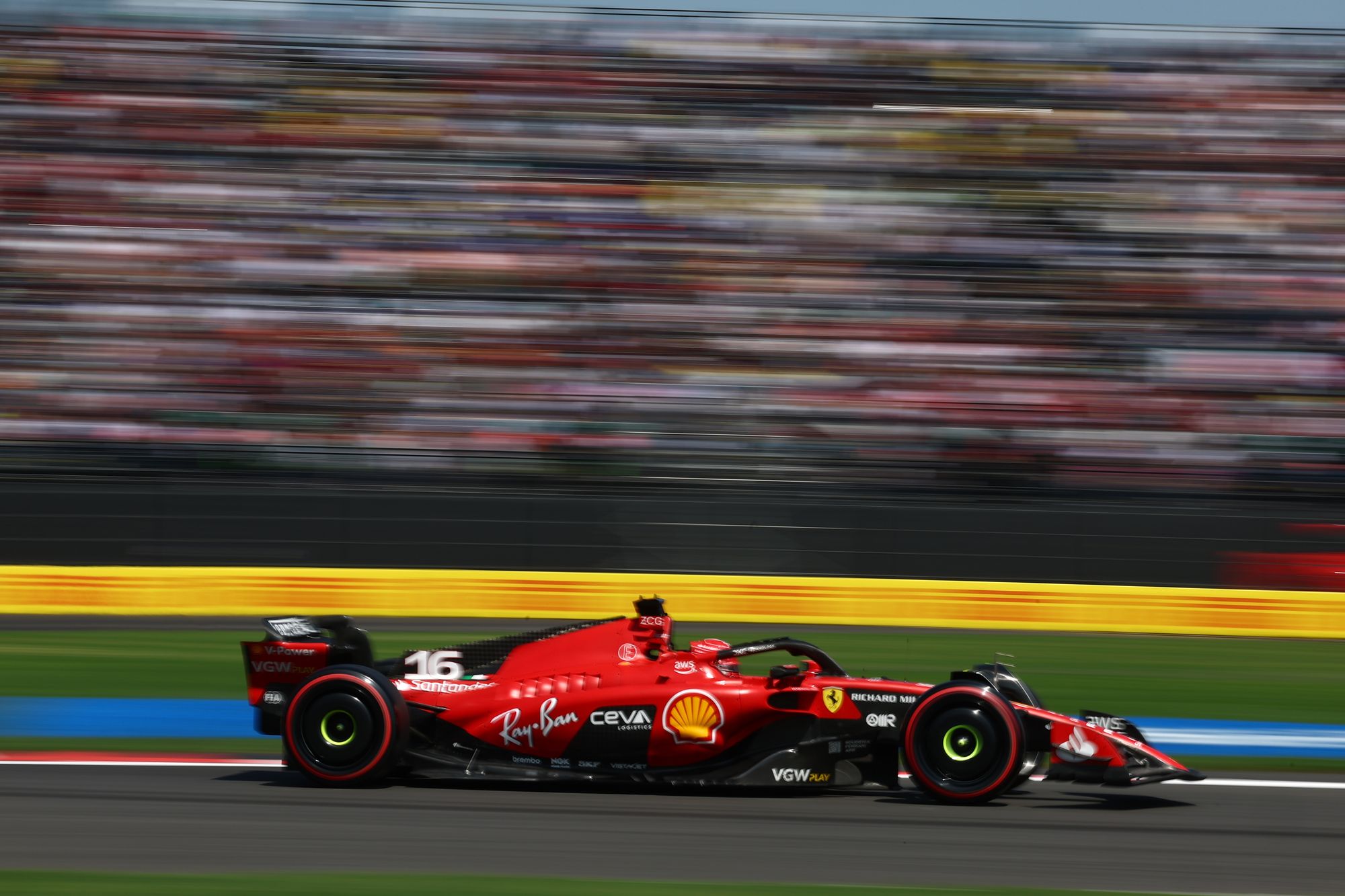
But even so, the level of improvement on those first Q3 runs surprised even Leclerc.
“It’s so difficult to put the tyres in the right window here so everything makes a difference," he said. "The out-lap worked well and even though I knew there was a bit more time coming I did not expect to gain 0.8s.”
“We need to understand why the car comes alive on low fuel and the C5 tyre,” said Sainz. “Sometimes this gives us good surprises like today.”
While the Ferrari adapted better to the track variations than the Red Bull over one lap, the picture inevitably changes when the tyres have done a few consecutive laps and the temperatures have stabilised. Then it’s all about which car retains a better balance between the two axles. Which is where the Red Bull’s advantage tends to amplify.
Ricciardo was a delighted fourth for AlphaTauri and even though that was a reflection of the car’s improved balance this weekend (which is something he and the team have been working on) and the fact that team-mate Yuki Tsunoda (taking an engine change penalty) towed him to great places in Q1 and Q2, it was also about how the AT04 was generating good front tyre temperatures.
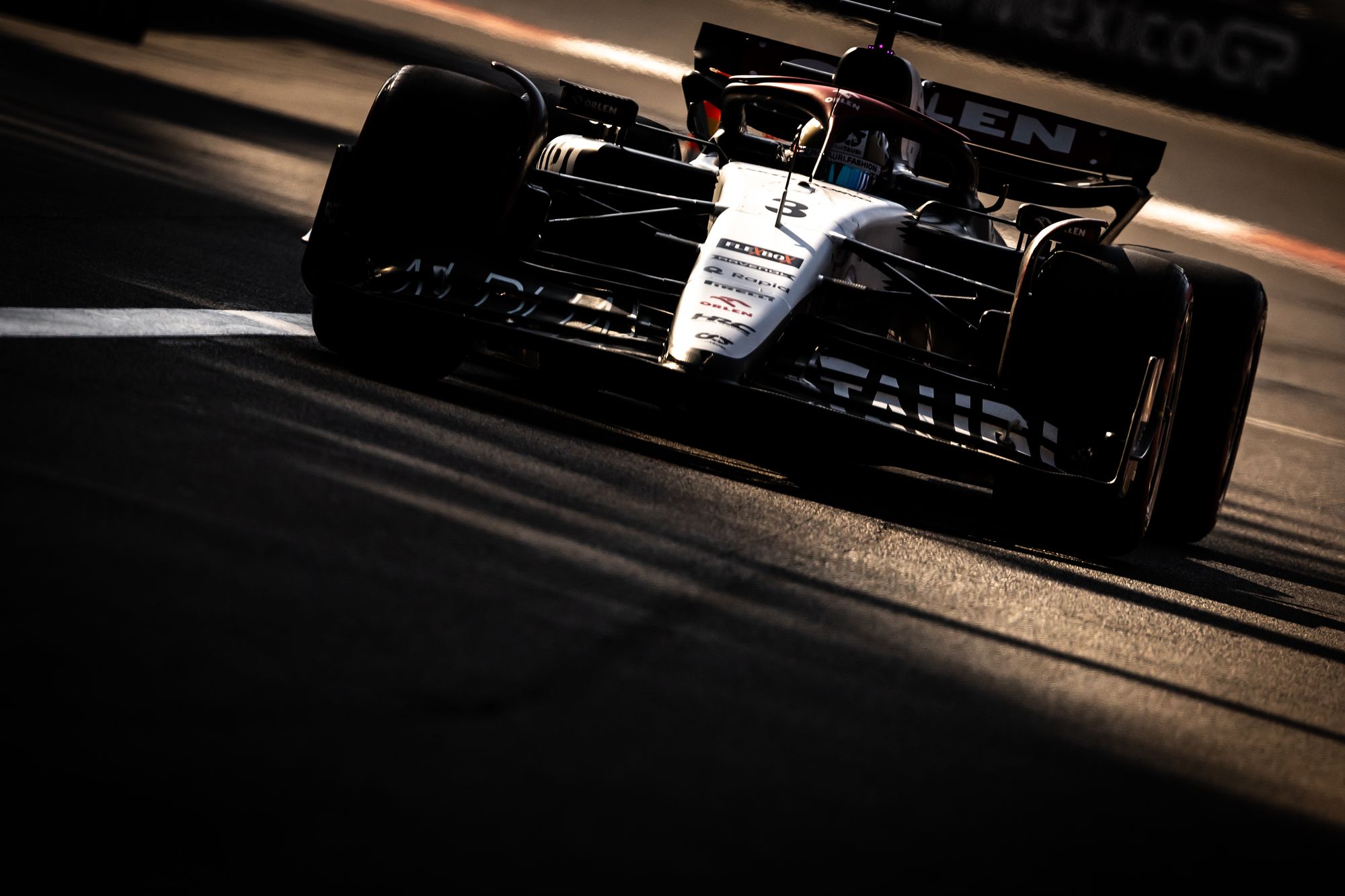
It helped Ricciardo to the fastest sector one time of all, and even though the grip of the rears was falling away by the end of the lap, that combination was still good for that second row position.
Neither Mercedes nor McLaren found that sweet spot, so further flattering his position. As did Albon’s difficulties in the Williams which was absolutely flying when the track temperatures were in the low-40s but struggling disproportionately in the higher temperatures of qualifying.
So, a very different picture to Friday. And likely it will be different again on Sunday.


